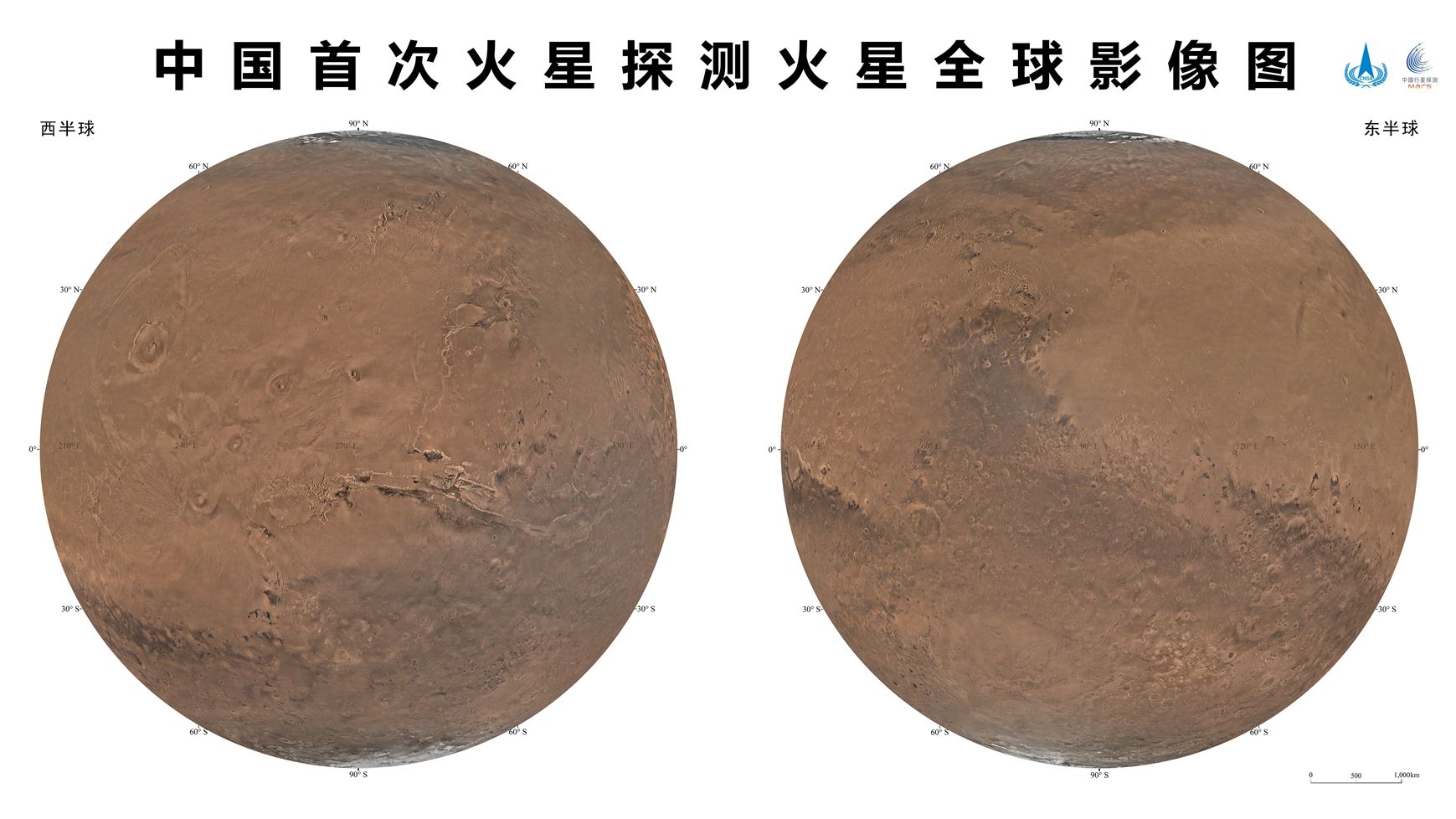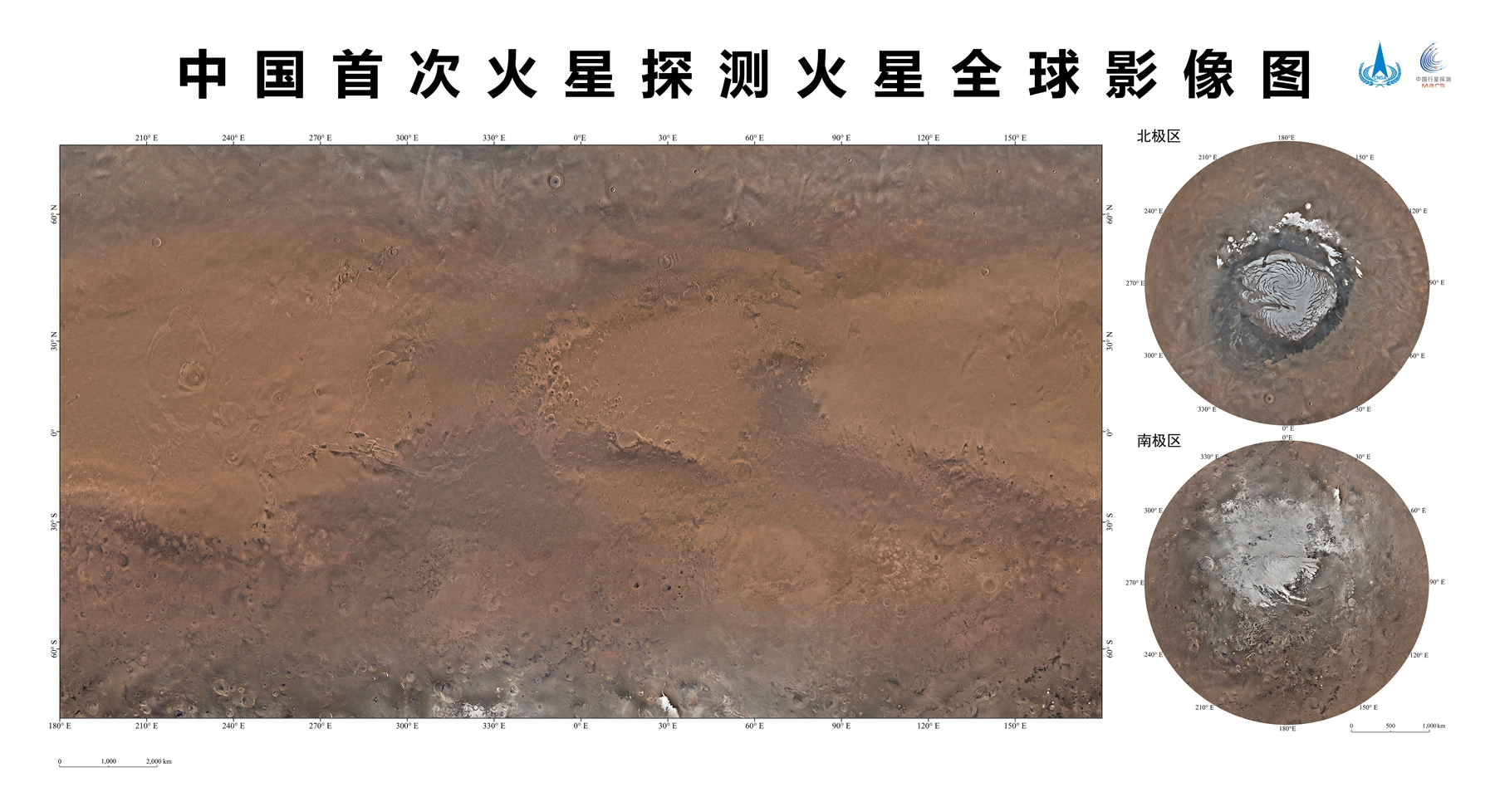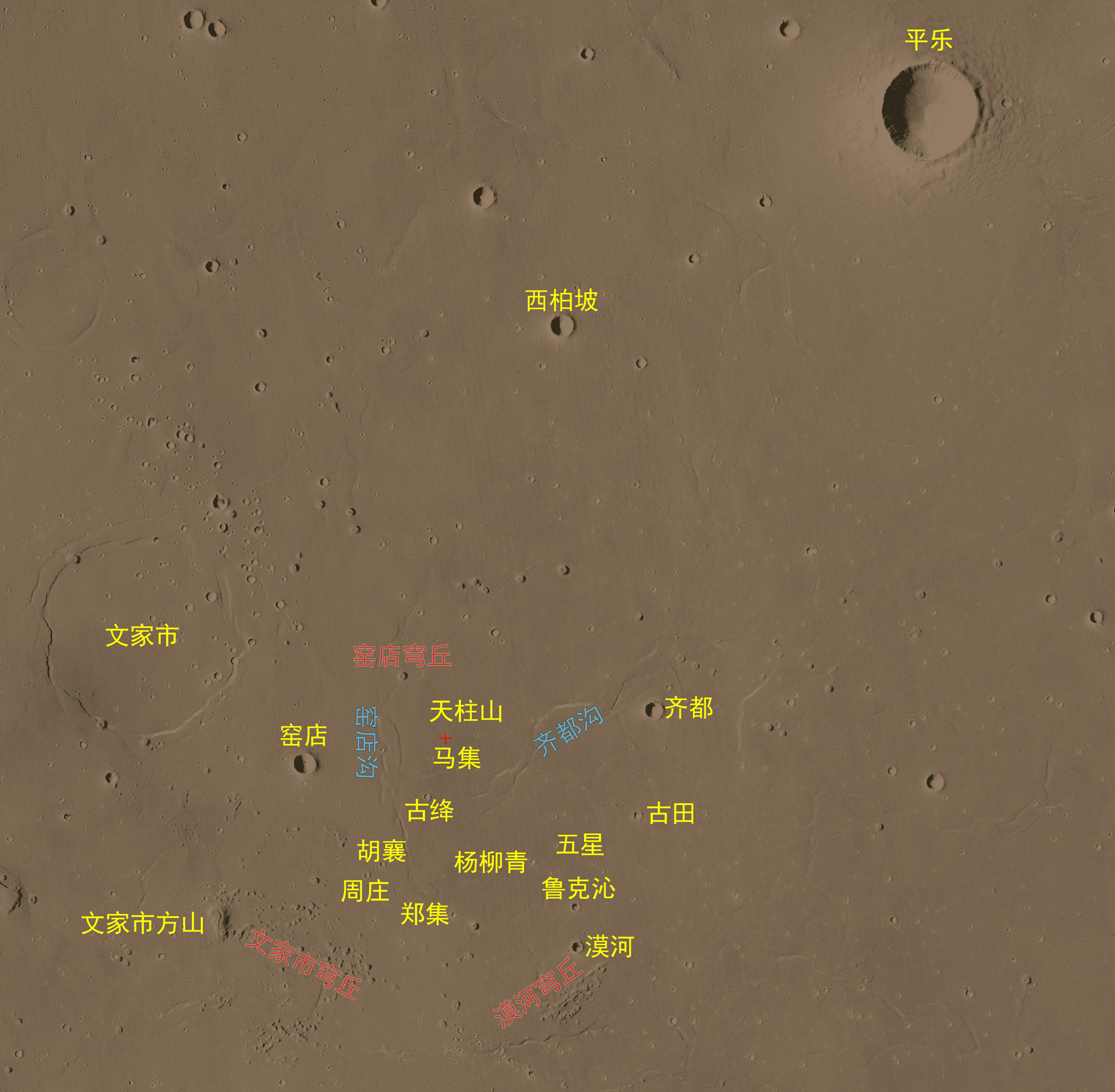01:57

China released its first color-coded global map of Mars on April 24, to coincide with the Space Day of China 2023. Its 76-meter spatial resolution provides better quality for conducting future Martian exploration projects and scientific research.

Global map of Mars in Robinson projection. /CNSA
Global map of Mars in Robinson projection. /CNSA
The colored map images were jointly released by China National Space Administration (CNSA) and the Chinese Academy of Sciences (CAS) at a launch ceremony held in Hefei, east China's Anhui Province.
The colored images, along with scientific data obtained by the Tianwen-1 Mars mission, will be conducive to deepening our understanding of the red planet, according to CNSA.

Global map of Mars in Mercator projection and azimuthal projection. /CNSA
Global map of Mars in Mercator projection and azimuthal projection. /CNSA
The medium-resolution camera of the orbiter of the Tianwen-1 mission carried out 284 orbital remote sensing imaging tasks from November 2021 to July 2022, providing coverage of the entire Martian surface. The ground application system processed 14,757 images to obtain the colored map images of the planet.
"This process has placed high demands for the orbital control," Zhang Rongqiao, chief designer for China's Mars Exploration Program, told CGTN in an interview on the sidelines of Space Day of China events.
He is confident that the colors presented in the map are precise and true to the red planet.
"This full-color image of Mars not only provides a better quality base map for our country's follow-up Mars exploration projects and scientific research, but also for our international colleagues' Mars exploration projects and scientific research," Zhang said.
"I believe this is an important contribution Tianwen-1 made for deep space exploration, for all humankind," he added.

Twenty-two geographic entities were named by the International Astronomical Union after historical and cultural villages and towns in China. /CNSA
Twenty-two geographic entities were named by the International Astronomical Union after historical and cultural villages and towns in China. /CNSA
Through these high-resolution images of Mars, researchers have identified a large number of geographic entities, 22 of which were named after historical and cultural villages and towns in China with a population of less than 100,000 by the International Astronomical Union based on relevant rules.
About China's first Mars mission, Tianwen-1
China's Tianwen-1 Mars probe was launched back in July 2020 and entered the Mars orbit in February 2021. The rover landed and started operations in May 2021.
After it completed 90 Martian days of assigned scientific exploration tasks, the rover has continued its exploration on the red planet. The rover, which has traveled 1,921 meters in 358 Martian days, is now in sleep mode.
As of June 29, 2022, the orbiter of the Tianwen-1 mission had realized global remote sensing exploration. It has been in operation for more than 1,000 days in good condition and will continue to carry out scientific exploration and accumulate original data in orbit, according to CNSA.
(CGTN's Sun Ye also contributed to this story.)